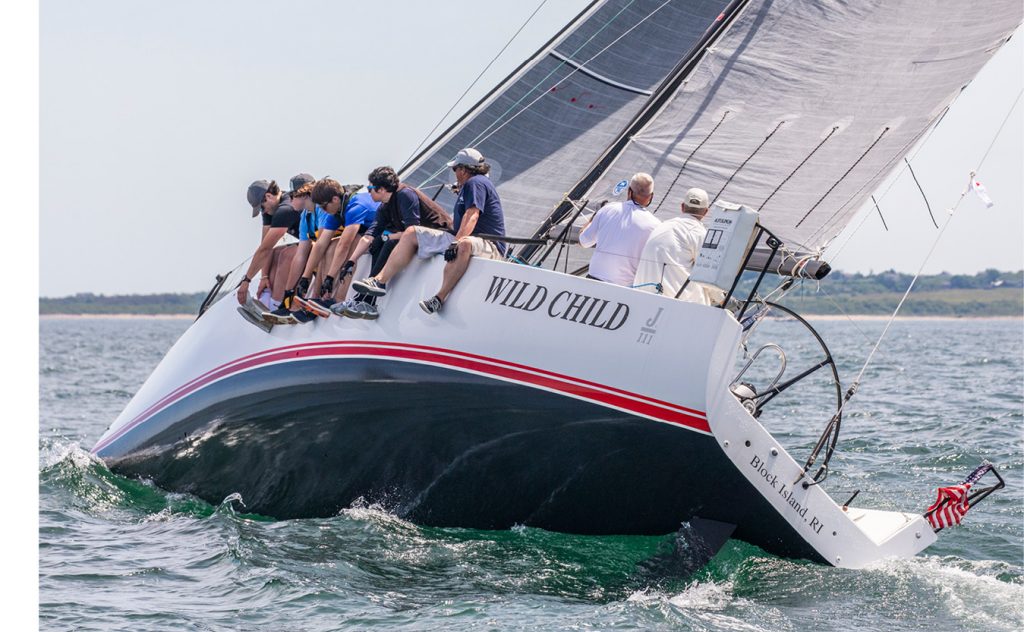One of my favorite things about sailing is that no two races are exactly alike. Every time you sail out to the starting line you find a unique set of wind and weather conditions. If you want to be successful in this environment, you must be smart and well prepared.
One of the best ways to get ready for a race is to develop a strategy. This is your plan for how to get around the racecourse as quickly as possible. It takes into account factors like wind, current and waves, but not the interference of other boats (that’s tactics).
Your strategy is an invaluable guide to keep you on the right track throughout your race. It must be in place when you come off the starting line, and this means you have to begin working on your gameplan well before the start of the race.
There are many things you should consider when putting together your gameplan. Here is a simple three-step process you can use before the start of any race to come up with a solid strategy.

It’s always important to go fast, but if you go fast in the wrong direction you will get nowhere quickly. That’s why you need a good strategic gameplan that is in place before you even think about starting the
Step 1: Figure out what the wind is doing.
I’ve put the wind in Step 1 because it is often the most crucial strategic factor. In most races, even a small change in the wind can produce a big change in the results. That’s why, in most cases, you should think about the wind more than other strategic factors. The wind is almost always changing in both direction and velocity, and you must consider this when making up your gameplan.
Changes in the wind direction or strength can have a huge effect on which boat comes out ahead. So before the start, try to predict what the wind will do during the first leg. If you can do this, it will be easy to figure out the favored side of the course.
Step 2: Evaluate the current.
The speed and direction of current can have a significant impact on strategy, especially if the current varies across the course. Current exists almost everywhere – from tidal bays and sounds to rivers and wind-driven lakes. Remember that current will affect your sailing wind, so this must be a strategic concern as well.
First you must observe and get an accurate picture of how the current is flowing across the course area. Then you have to figure out how this affects your strategic plan
Step 3: Check out the course geometry.
When I talk about racecourse geometry, I mean how the marks are positioned relative to each other and the wind direction.
Take a look at where the marks are positioned. Is the first mark directly upwind? How far is it? If the course is not set up square to the wind, you should factor this into your strategy since you usually want to sail the longer tack first.
When you are strategizing before the start, you should be concerned primarily with the location of the first mark. For example, is it dead upwind from the starting line? ■
This article originally appeared in David Dellenbaugh’s Speed & Smarts, The newsletter of how-to tips for racing sailors. If you want to sail faster and smarter, log onto SpeedandSmarts.com.
A resident of Easton, CT, Dellenbaugh was tactician and starting helmsman for America3’s successful defense of the America’s Cup in 1992. He’s a Lightning World Champion, two-time Congressional Cup winner, seven-time Thistle National Champion, two-time winner of the Canada’s Cup, three-time Prince of Wales U.S. Match Racing Champion, and a winner of the U.S. Team Racing Championships for the
Hinman Trophy.
